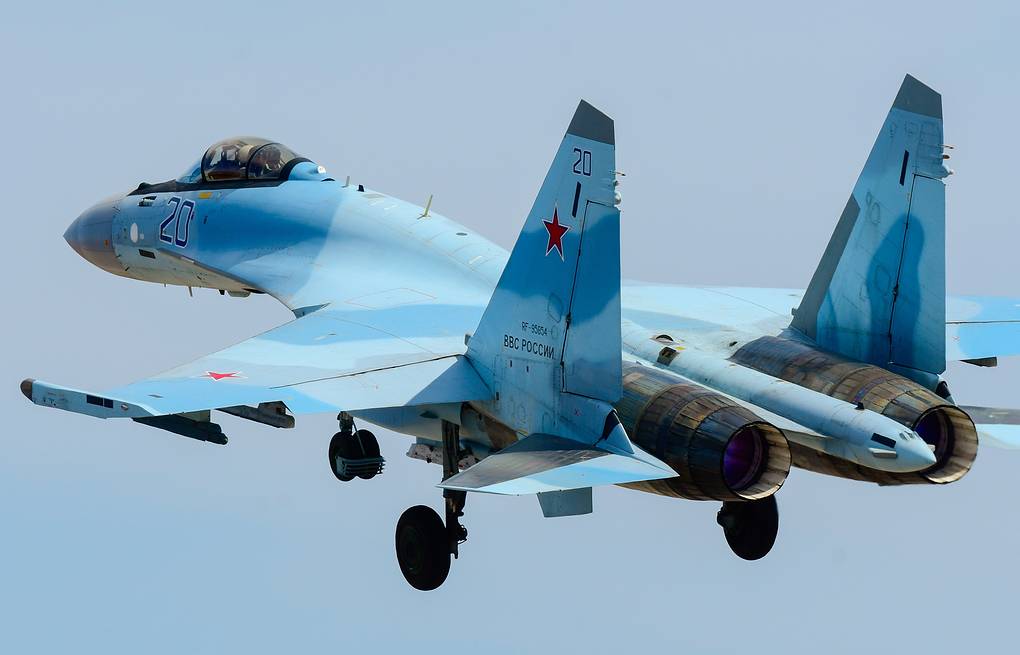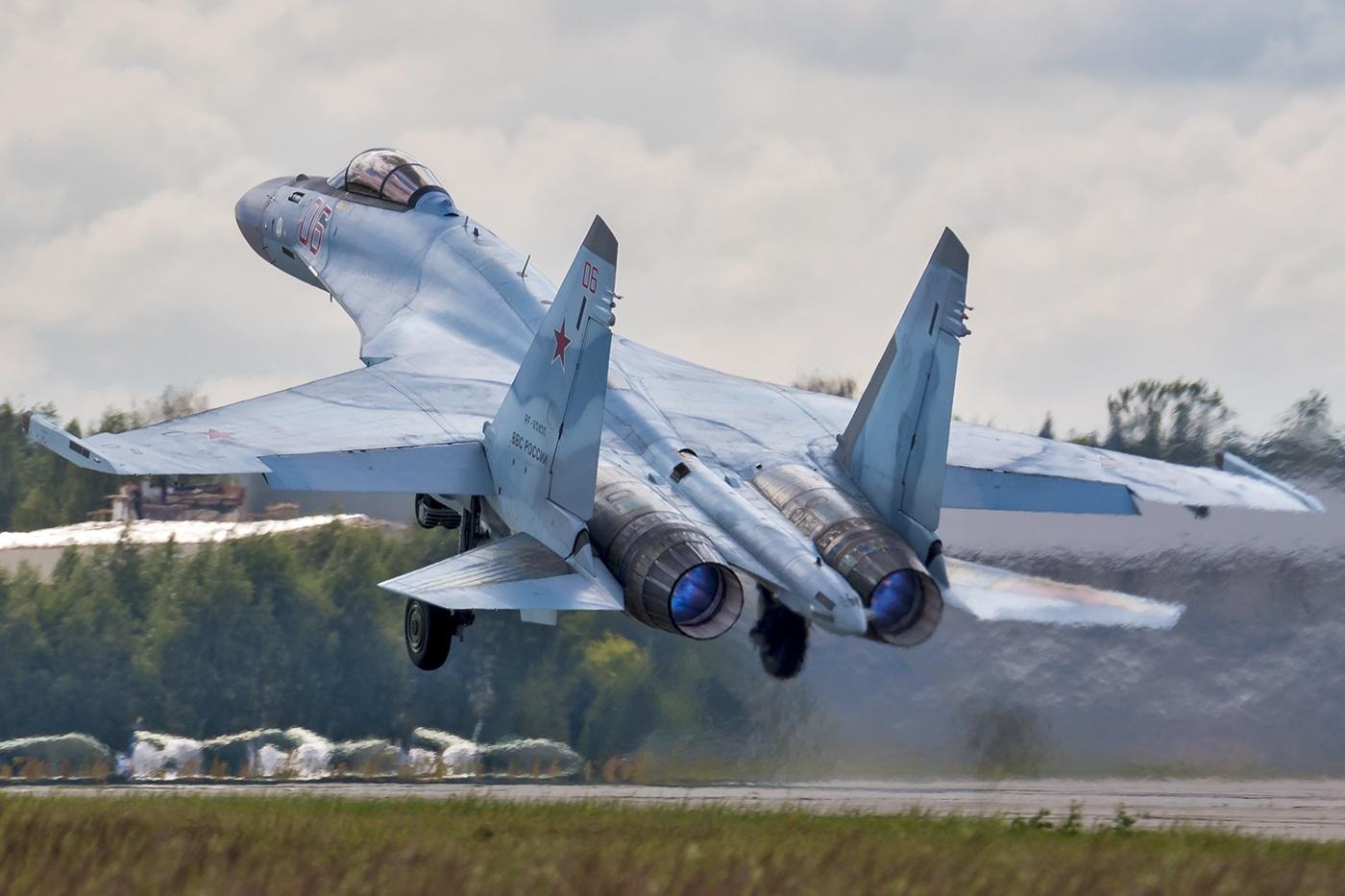The Sukhoi Su-35, often referred to as the “Flanker-E,” represents the zenith of Russian fighter jet technology, showcasing advanced capabilities that make it a formidable force in the modern aerial battlefield. With its cutting-edge avionics, superior maneuverability, and powerful armament, the Su-35 continues to be a vital asset for the Russian Air Force and a potent competitor in the global fighter jet arena. This article explores the design, performance, and impact of the Su-35, highlighting why it is considered one of the most advanced multirole fighters in service today.

Origins and Development
The Su-35 is an evolution of the Su-27 family, designed to address the demands of modern air combat and technology advancements. Developed by the Sukhoi Design Bureau, the Su-35 made its first flight in 2008 and entered service with the Russian Air Force in 2014. It was developed to replace older aircraft and to compete with other advanced fighters like the F-22 Raptor and the Eurofighter Typhoon.
Design and Aerodynamics
The Su-35 retains the distinctive airframe of the Su-27 but incorporates numerous enhancements to improve its performance and versatility. One of its standout features is the advanced thrust-vectoring engines, which provide exceptional maneuverability and enable the aircraft to perform complex aerial maneuvers with ease. The Su-35’s design includes a larger and more aerodynamically refined airframe, which improves its stability and reduces its radar cross-section, enhancing its survivability in combat.

Power and Performance
The Su-35 is powered by two Saturn AL-41F1S turbofan engines, each generating approximately 32,000 pounds of thrust. These engines provide the Su-35 with a top speed of around Mach 2.25 (approximately 2,400 kilometers per hour or 1,500 miles per hour) and a combat radius of approximately 1,600 kilometers (1,000 miles). The aircraft’s impressive climb rate and operational ceiling, combined with its thrust-vectoring capability, make it highly effective in both high-speed intercepts and close-quarters dogfighting.
Advanced Avionics
The Su-35 features state-of-the-art avionics and electronic systems, making it one of the most advanced fighters in the world. The aircraft is equipped with the Irbis-E radar, which boasts a range of over 400 kilometers (250 miles) and the ability to track multiple targets simultaneously. The Su-35 also includes an advanced electronic warfare suite, including radar jammers and decoys, to protect it from enemy threats. The cockpit is designed for optimal pilot performance, featuring a modern heads-up display (HUD) and multifunction displays that provide comprehensive situational awareness.

Armament and Combat Capabilities
The Su-35 is armed with a diverse range of weapons, making it a versatile multirole fighter. It is equipped with a 30mm GSh-30-1 cannon for close-range combat and can carry up to 8,000 kilograms (17,600 pounds) of munitions on 12 external hardpoints. The aircraft can be armed with a variety of air-to-air missiles, including the R-77 (AA-12 Adder) medium-range missile and the R-73 (AA-11 Archer) short-range missile. For ground attack missions, the Su-35 can carry precision-guided munitions, including bombs and rockets, allowing it to engage a wide range of targets.
Operational History
Since its introduction, the Su-35 has become a cornerstone of the Russian Air Force’s tactical and strategic capabilities. It has been involved in various military exercises and operations, showcasing its effectiveness in both air superiority and multirole missions. The Su-35 has also been exported to several countries, including China and Egypt, where it continues to enhance the air combat capabilities of its operators.
Modern Upgrades and Future Prospects
The Su-35 remains at the forefront of fighter jet technology, with ongoing upgrades planned to enhance its capabilities further. Future enhancements are expected to include improvements in avionics, stealth features, and weapon systems, ensuring that the Su-35 remains competitive against emerging threats and advancements in aerial warfare technology.
Legacy and Impact
The Sukhoi Su-35 represents the pinnacle of Russian fighter jet design and engineering. Its advanced technology, superior performance, and combat versatility make it a key asset for any air force. The Su-35’s success underscores the continued relevance of Russian aerospace innovation and its ability to produce world-class combat aircraft capable of meeting the demands of modern warfare.
Conclusion
In conclusion, the Sukhoi Su-35 Flanker-E is a testament to the evolution of Russian fighter aircraft technology. Its combination of advanced avionics, exceptional maneuverability, and powerful armament ensures that it remains a formidable force in the skies. As an enduring symbol of Russian aerospace prowess, the Su-35 continues to shape the future of aerial combat and maintain its status as one of the most advanced multirole fighters in the world.





